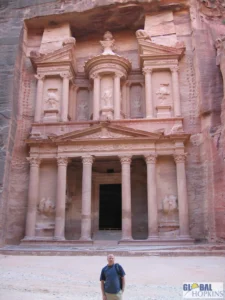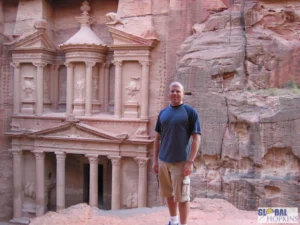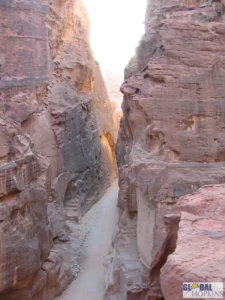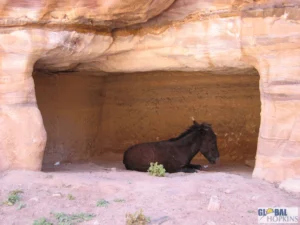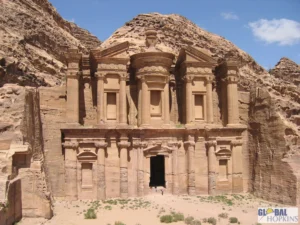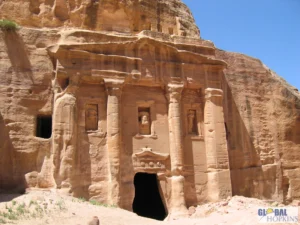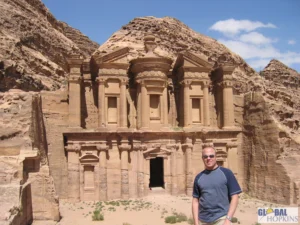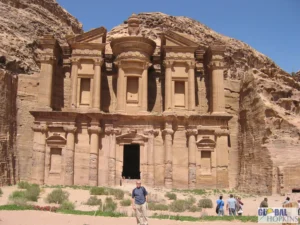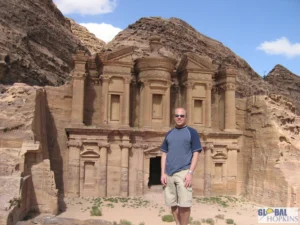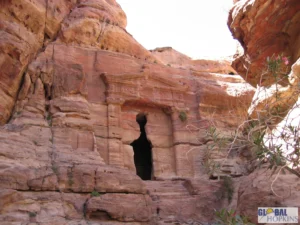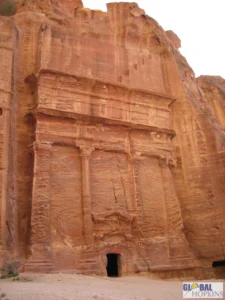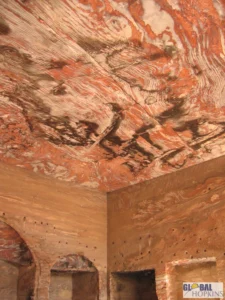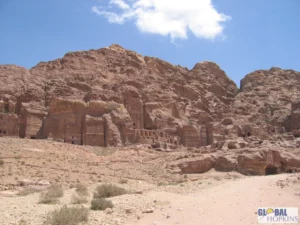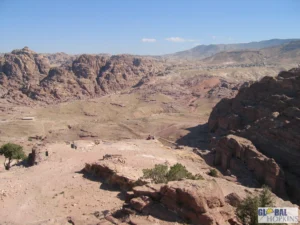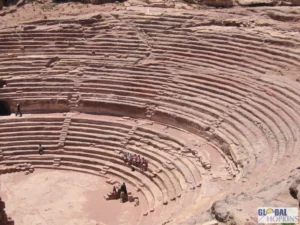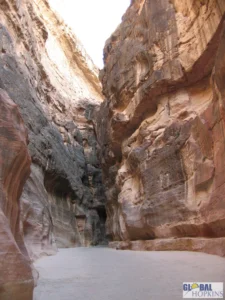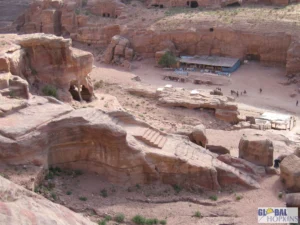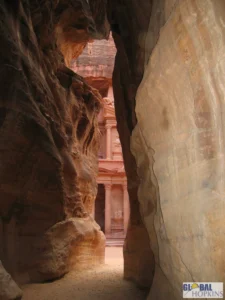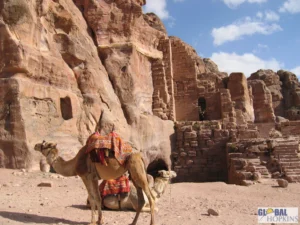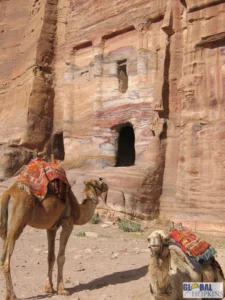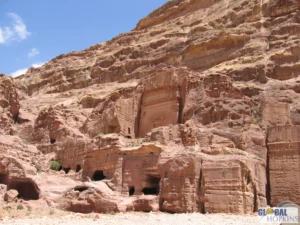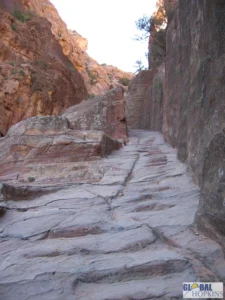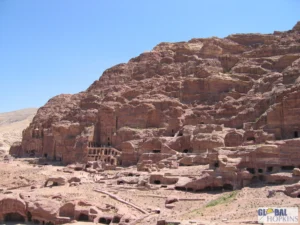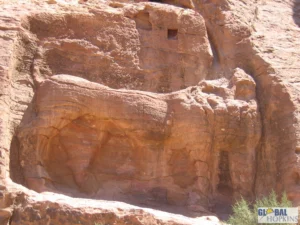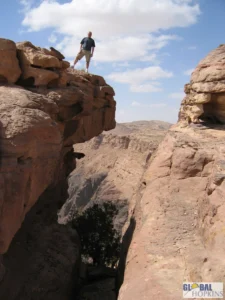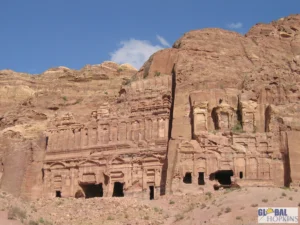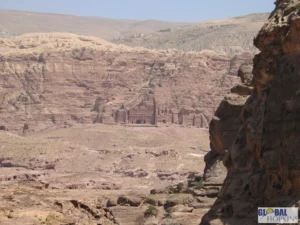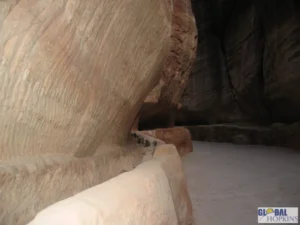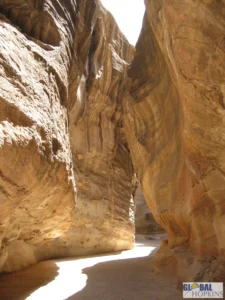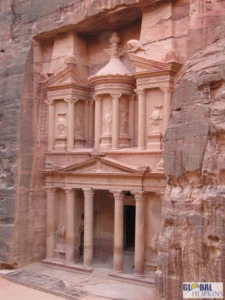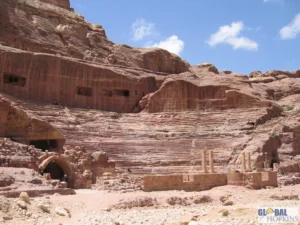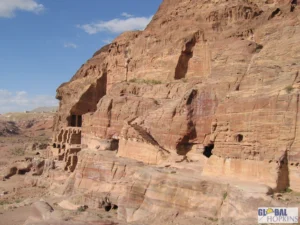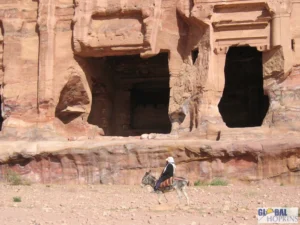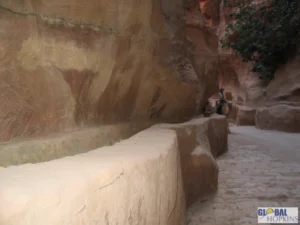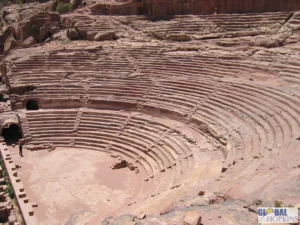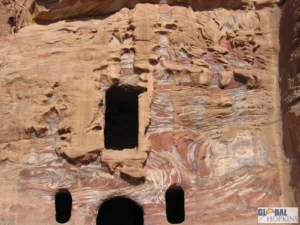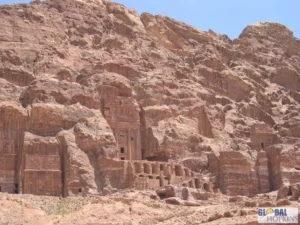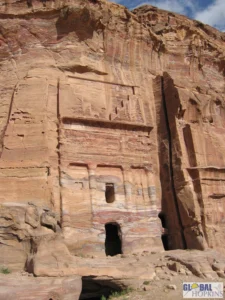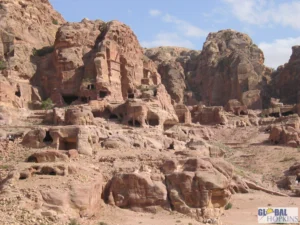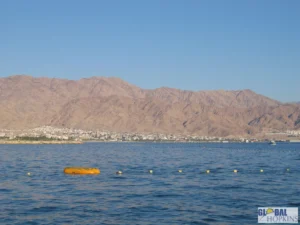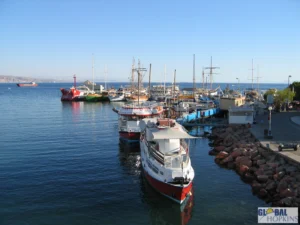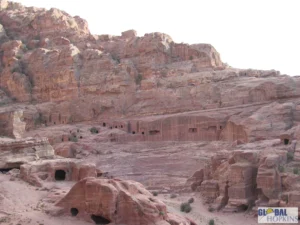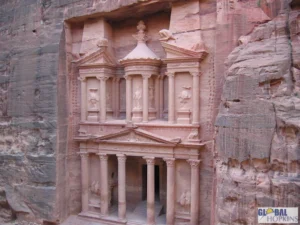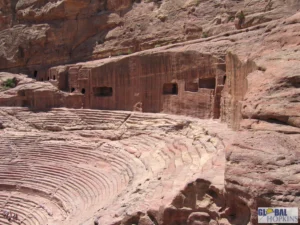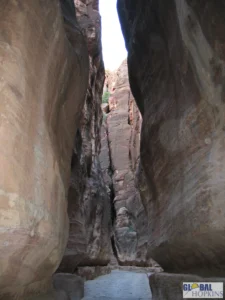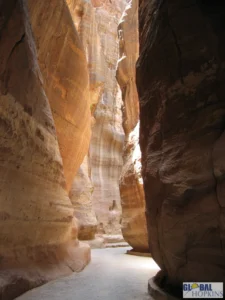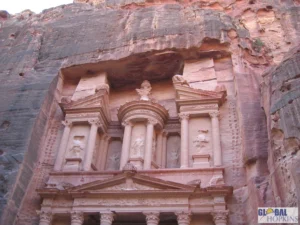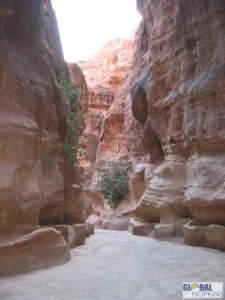Petra is an ancient city carved into rose-colored sandstone cliffs in southern Jordan, about 3 hours south of Amman. Known as the “Rose City” for its pinkish hue at sunrise and sunset, it is one of the New Seven Wonders of the Worldand a UNESCO World Heritage Site since 1985.
Petra combines natural beauty, architectural genius, and ancient mystery. Its rock-hewn temples and tombs are a testament to Nabataean engineering — a city literally carved into stone. It remains Jordan’s most famous attraction and a symbol of the country’s rich heritage.
History & Significance
- Founded: Around the 4th century BCE by the Nabataeans, an Arab trading people who controlled major caravan routes between Arabia, Egypt, and the Mediterranean.
- Peak: Between the 1st century BCE and 2nd century CE, Petra was a thriving metropolis of trade, culture, and architecture — famous for its sophisticated water systems and monumental tombs.
- Decline: After trade routes shifted and a series of earthquakes, Petra was largely abandoned by the 7th century CE. Western explorers “rediscovered” it in 1812.
Main Highlights
- The Siq – A dramatic, narrow gorge (about 1 km long) flanked by towering cliffs, serving as the main entrance.
- The Treasury (Al-Khazneh) – Petra’s most iconic monument, intricately carved into the rock, originally a Nabataean royal tomb.
- The Street of Facades – Rows of impressive rock-cut tombs and houses.
- The Theatre – Carved entirely into the mountain, seating up to 4,000 spectators.
- The Royal Tombs – Majestic multi-story facades overlooking the valley.
- The Monastery (Ad-Deir) – Larger but similar in style to the Treasury; a 45-minute uphill climb rewards visitors with incredible views.
- High Place of Sacrifice – A hike to one of Petra’s highest points with panoramic views of the entire site.
Visitor Experience
- Entry: Through the Siq on foot, horseback, or by electric cart.
- Timing: Best visited early morning or late afternoon when the rock glows red-gold.
- “Petra by Night”: A candlelit experience offered on select evenings — magical views of the Treasury under starlight.
- Duration: Ideally 1–2 days to explore the main site and hiking trails.
Location & Access
- Nearest town: Wadi Musa (the modern gateway to Petra).
- Distance: ~240 km (150 mi) from Amman; ~125 km (78 mi) north of Aqaba.
- Transport: Car, tour bus, or organized excursion; most cruises docking at Aqaba offer day trips to Petra.

